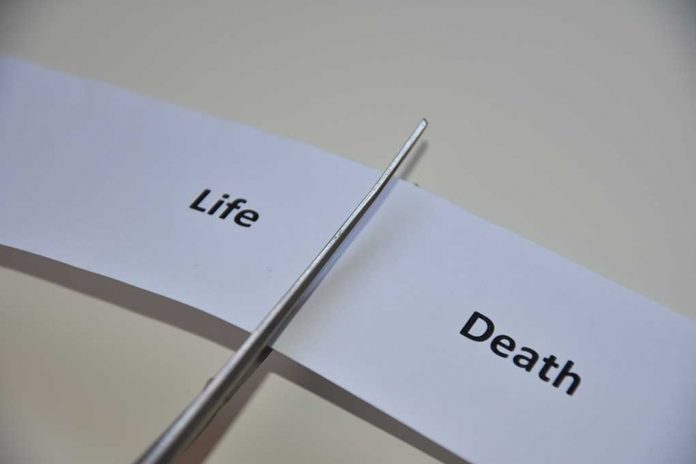(ModernSurvival.org) – Everyone hopes they will never have to face the impossible choice of saving one life while allowing another to be lost. Usually, this kind of scenario occurs after mass casualty incidents, where large groups of people have been critically injured. These incidents could include mass shootings, terrorist attacks, large-scale automobile accidents, and the aftermath of a natural disaster.
When facing such a traumatic event, quickly deciding who needs help — and who is beyond saving — is critical.
Triage & SALT
Following a disaster in which multiple people are seriously injured, time is incredibly important. The sad fact is that helping someone who isn’t savable, or someone who doesn’t have life-threatening injuries, will endanger those who may still survive if they receive life-saving help.
That said, determining who needs help the most and who is beyond saving is a nightmare scenario for anyone to face. In medical terminology, a person in this situation will have to perform triage to determine the severity of injuries and the order in which each person will receive help. The Acronym SALT (Sort, Assess, Life-Saving Intervention, Treatment/Transport) can help to assess the situation and begin helping.
Sort & Assess
The first step of SALT is to sort through the injured to determine the severity of the injuries. The fastest way to determine if someone is stable is by having them walk to a specific location. Generally, if they can walk, they go to the back of the line for help, or they may even be able to help themselves with minor injuries.
If the injured cannot walk, ask them to wave or give a sign that they are conscious. These people may be suffering worse injuries than those who were able to walk, but they are still able to respond, which makes them the next step up in priorities.
Begin heavier assessments with the individuals who were unable to walk or respond. Chances are, in a situation like this, there will be dead and dying among the injured. Determine a method for identifying those who are confirmed dead in order to direct triage care and emergency responders to survivors. One way to mark the deceased is by rolling them over, face-down, to signify they have died. This method may seem harsh, but when other lives are at stake, it’s critical.
There will also be expectant deaths, which are people whose injuries are so severe that they likely cannot be saved (especially without proper medical knowledge or equipment). This is when choosing whether or not to help becomes incredibly difficult. Unfortunately, until professional help arrives for these individuals, there isn’t much to do other than move on to those who can be helped.
A great deal of the assessment step is done while sorting the injured and creating a priority of treatment. However, those in the greatest levels of treatable danger need additional assessment. Ask questions such as:
- Are they breathing?
- Are they losing blood?
- Are they convulsing or in a comatose state?
Life-Saving Intervention
This is where helping the injured begins. Apply tourniquets to stop major hemorrhaging and begin CPR where applicable. Anyone who is able to help should be involved at this point, even if it is only to apply pressure on wounds to slow down the bleeding. The goal is to save as many lives as possible while waiting for emergency services to arrive.
Treatment/Transport
The last step of SALT will likely be performed by trained professionals as they begin to arrive at the scene. They will begin transporting the injured to hospitals. Additionally, they can be directed to expectant individuals who may still be saved.
No one ever wants to be in a situation where they’re forced to perform triage. However, knowing how to do it could save lives.
Sadly, the likelihood of having proper medical equipment on hand to help treat the wounded in a mass casualty incident is very low. This is why knowing how to improvise is incredibly important. For example, a sock can be used to treat a life-threatening injury. To see how check out our article here.
~Here’s to Your Survival!
Copyright 2023, ModernSurvival.org













